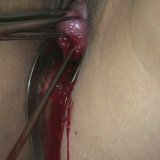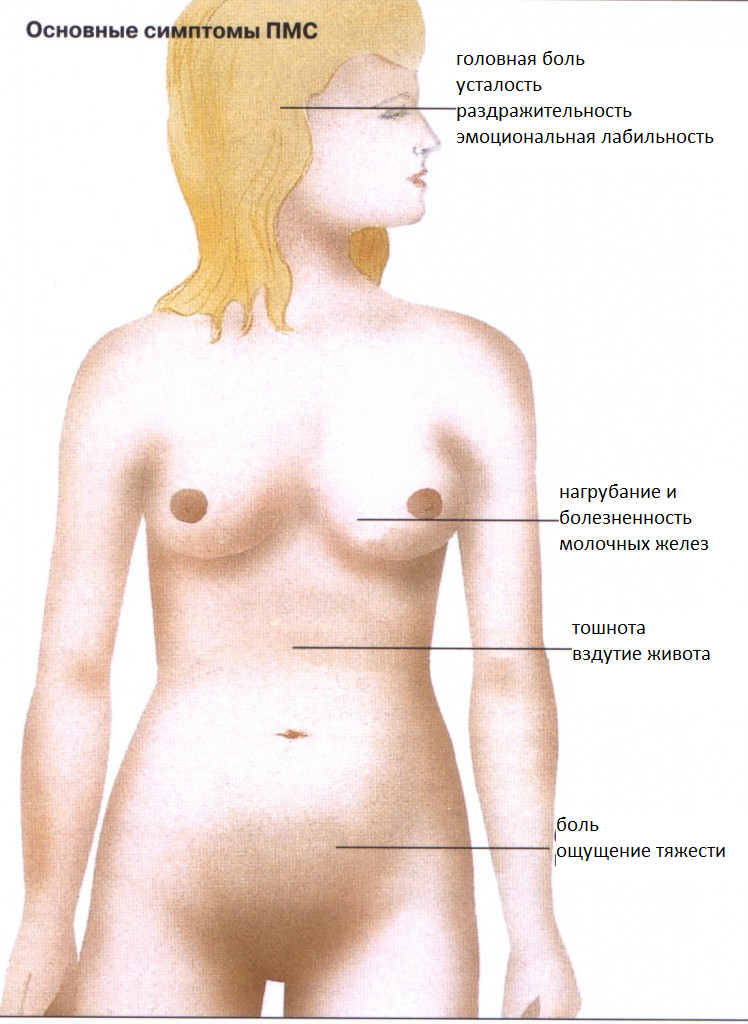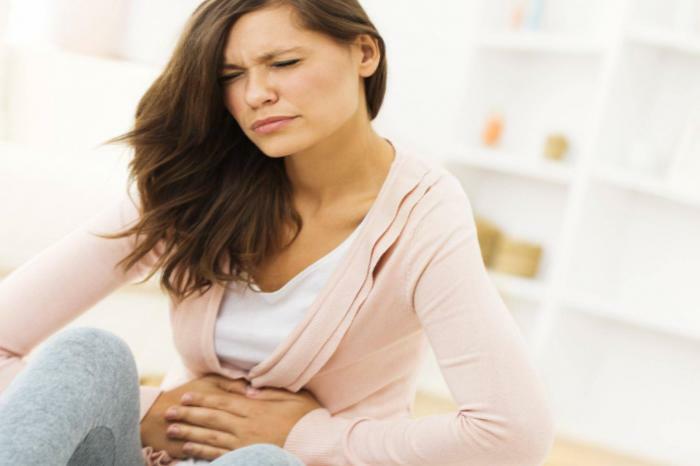Complications after abortion: symptoms, treatment

Abortion - is an artificial termination of pregnancy, which is accompanied by the death of the fetus, unable to exist independently( unlike preterm labor), or the destruction of the fetus.
The timing of abortion is up to 22 weeks from conception or at a later date.
The main indications for abortion: intrauterine development is incorrect, fetal death in the womb as a result of frozen pregnancy and death threat to the mother, including ectopic pregnancy.
Methods of abortion:
- medical provocation of pregnancy termination( 2-8 weeks) - see Medical abortion
- vacuum aspiration( from two to five weeks)
- abrasion - surgical removal of the fetus( in the common language - scraping, 6 to12 weeks, in some cases up to 22 weeks)
- later termination of pregnancy - by artificially created premature "birth"( at a period exceeding 22 weeks).Below, all possible complications after the abortion will be listed: symptoms, treatment.
Complications after an abortion and their symptoms
The procedure for an abortion can entail various complications, which now occur quite often. Even the most successful abortion is harmful to health. Sooner or later, but the consequences will necessarily be overtaken by the woman who took this step. Complications of abortion are not only psychological problems of a woman. Very often they can lead to irreversible physiological conditions. This is infertility, and even a death threat for a woman. With each subsequent abortion, the risk of more serious complications increases.
Complications of abortion are both early and late.
Early complications of
These include complications arising during or shortly after surgery. These are bleeding, inflammatory processes( endometritis, adnexitis), uterine perforation, inflammation of the peritoneum( peritonitis).The most dangerous of them is the puncture of the uterine wall, since it can lead to damage to other organs, which will require immediate surgical intervention. The emerging bleeding with varying intensity, which arose because of a breach of the contractility of the walls of the uterus, requires a repeated request to the doctor for the procedure of scraping. The more often this procedure is carried out, the more the walls of a reproductive organ, such as the uterus, become narrower. As a consequence of the emergence of chronic foci of infection in the female genital organs and incomplete removal of the remaining parts of the fetal egg, inflammatory processes of the organs appear. Their symptoms are as follows: in the lower abdomen there are pains of a pulling nature, this is accompanied by an increase in temperature and the appearance of purulent-bloody discharge from the genital tract, as well as weakness.
Late complications of
The late complications include hormonal disorders, infertility, the onset of endometriosis, miscarriage( as a consequence of abortion and curettage), chronicity of acute processes, and complicated pregnancies in the future. Such abortion complications appear after a time, and even in years. Causes may arise in the cavity of the uterus adhesions, the restructuring of hormones. Manifestations may be the emergence of hormonal-dependent diseases( uterine myoma, endometriosis, endometrium, hyperplasia) and a violation of the monthly cycle, even a small one.
Treatment of complications after abortion
Symptoms and treatment of complications after an abortion are depending on the severity of a specific infection. It is important to make sure that the residual fetal tissue is not present in the uterus. In case of suspicion of spontaneous abortion( miscarriage), special help is needed to make sure that the uterine cavity is free. It is necessary to carry out intramuscular or intravenous parenteral antibiotic therapy and infusion therapy and immediate removal of the remains of fetal tissues.
In other words, antibiotic therapy should be performed immediately. In the case of a minor infection, hospitalization may not be necessary. Reception of antibiotics can be done inside. If after 2-3 days it becomes much better( weakening of the pain, the uterine soreness becomes less in the examination, the body temperature is normal), then it is not necessary to perform vacuum aspiration or curettage. If the symptomatology persists, the condition worsens, the uterine soreness increases, then, to avoid the presence of remnants of the fetal tissue, vacuum aspiration and curettage are most likely necessary.
Symptoms of infection:
- back pain;
- pain in the pelvis or abdomen;
- chills and fever;
- foul-smelling vaginal discharge;
- bleeding or prolonged bleeding;
- drowsiness, muscle pain, general weakness;
- painful sensations when the cervix moves or the tenderness of the appendages or uterus when examining the pelvic region;
After detection of these signs, with their development, women should immediately seek help. This must be done even if the form of their expression is not expressed. Symptoms of infection usually appear 2-3 days after the abortion, but the infection begins either earlier or several years later.
Symptoms of the presence of fetal tissue after delivery or abortion:
- pelvic pain or abdominal pain;
- back pain;
- prolonged and severe bleeding, which can cause shock( sweating, rapid pulse, dizziness or fainting, sticky skin);
- when examining the pelvic region - a soft, enlarged painful uterus;
- visible in the cervical canal tissue.
Often the infection is accompanied by symptoms of the presence of the remains of the fetal tissue, which is a fertile environment for the growth of bacteria. In this case, it is supposed to remove residual tissue or blood clots by vacuum aspiration or curettage followed by the injection of methylergometry or other oxytocin derivatives in order to maintain a good tone in the uterus and expel blood clots or tissue debris.



